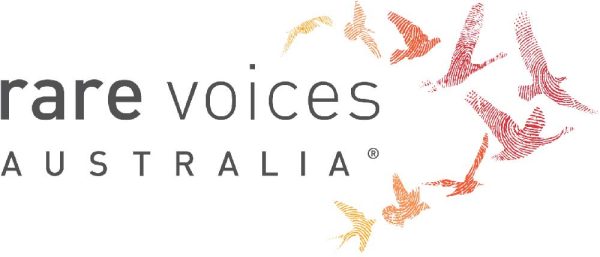Kabuki syndrome
Quick Search
- Summary
- Synonyms and Classifications
- Symptoms
- Disability Impacts
- Cause and Inheritance
- Diagnosis
- Treatment
- Clinical Care Team
- Clinical Care Guidelines
- Emergency Management
- Research
- Rare Disease Organisation(s)
- Lived Experience
- Support Services and Resources
- Mental Health
- Other Information
- Useful Links for Healthcare Professionals
Summary
Kabuki syndrome is a genetic condition that affects multiple body systems (multisystem condition) and is present from birth (congenital).1,2 Individuals with Kabuki syndrome have characteristic facial features, delayed growth, short stature, bone abnormalities and intellectual disability. They may also have low muscle tone (hypotonia), seizures, smaller head size (microcephaly), feeding difficulties, speech delay, as well as issues with their heart, vision, hearing and a range of other symptoms.1-3 Kabuki syndrome can affect both males and females.
Synonyms and Classifications
Synonyms: Kabuki makeup syndrome, KMS, Niikawa-Kuroki syndrome.
Universal rare disease classifications provide a common language for recording, reporting and monitoring diseases. Please visit the Rare Disease Classifications page for more information about these internationally recognised classifications.
Symptoms
Certain features of Kabuki syndrome can be present from birth, such as facial features including:1-5
- long openings between the eyelids (palpebral fissures)
- lower eyelids that are turned outward (everted)
- prominent eyelashes, arched eyebrows, broad nose with flattened tip
- large, misshaped ears
Other than facial features, individuals with Kabuki syndrome also have:1-5
- growth deficiency (short stature, partial growth hormone deficiency)
- mild to moderate intellectual disability
- seizures
- weak muscle tone (hypotonia)
- significantly smaller head size (microcephaly)
Individuals may also have low blood sugar due to high insulin (hyperinsulinism), cleft palate, hearing loss, speech delays, feeding difficulties due to gastroesophageal reflux, heart abnormalities, dental issues and bone abnormalities.2-5 A range of other organs may also be affected.
Please speak to your medical team to learn more about the signs and symptoms of Kabuki Syndrome.
Disability Impacts
Rare diseases are often serious and progressive, exhibiting a high degree of symptom complexity, leading to significant disability. Majority of the estimated two million Australians living with a rare disease meet the Australian Government’s definition for disability (in accordance to the Australian Public Service Commission and Australian Bureau of Statistics), and many experience severe and permanent disability impacts. If you or someone you care for is experiencing disability-related impacts from a rare condition, please speak with a health or disability professional for advice. Information about relevant disability support can be found at the RARE Portal’s Disability Support Information page.
Cause and Inheritance
Kabuki syndrome is a genetic condition caused by disease-causing genetic changes (variants) in one of these two genes, KMT2D and KDM6A.2 Most cases are caused by genetic variants in the KMT2D gene.
These genetic variants usually occur randomly (de novo) prior to birth and are not passed down (inherited) from their parents. In some cases, the variants were inherited – the KMT2D variants were inherited in an autosomal dominant manner, whilst KDM6A variants were inherited in a X-linked dominant manner. In rare cases, the genetic variant in one of the gene’s alleles had been inherited from a parent who has the genetic change in some but not all of their cells (genetic mosaicism).7 More information on these inheritance patterns can be found at:
- Centre for Genetics Education: Autosomal dominant inheritance
- Centre for Genetics Education: X-linked inheritance
- Centre for Genetics Education: Mosaicism
If you would like to learn more about the inheritance and impact of this condition, please ask your doctor for a referral to a genetic counsellor. Genetic counsellors are qualified allied health professionals who can provide information and support regarding genetic conditions and testing. More information about genetic counselling can be found
- Information on Genetic Services
- The National and State Services pages underneath the ‘Genetic Counselling’ sections listed
Diagnosis
An international consensus clinical diagnostic criterion for Kabuki syndrome has been published. The diagnosis of Kabuki syndrome may be suspected based on certain clinical features and confirmed by genetic testing.5
As part of the diagnostic process, doctors may do a differential diagnosis, where they rule out other conditions that have similar symptoms, such as CHARGE syndrome, 22q11.2 deletion syndrome, IRF6-related disorders such as Van der Woude syndrome and popliteal pterygium syndrome, Branchiootorenal (BOR) syndrome, hypermobile Ehlers-Danlos syndrome (hEDS), Larsen syndrome, X-chromosome anomalies, Hadikar syndrome, Fryns syndrome, Turner syndrome.2,5
Please speak to your medical team to learn more about the available diagnostic pathways for Kabuki syndrome.
Treatment
There is currently no curative treatment for Kabuki syndrome. Treatment is targeted at symptomatic management, reduce complications and improve quality of life, which involves a multidisciplinary care team. This may include monitoring of growth, use of a feeding tube for those with feeding difficulties, physiotherapy, occupational therapy, speech therapy, seizure management, as well as treatment of eye and visual issues, hearing, cleft palate, heart defects and other symptoms as required.2,5
Please speak to your medical team to learn more about the possible treatment or management options for your condition. Treatment will depend on an individual’s specific condition and symptoms. It is also important to stay connected to your medical team so that you can be made aware of any upcoming clinical trial opportunities.
Clinical Care Team
Clinical care for rare diseases often involves a multidisciplinary team of medical, care and support professionals. Please note that the information provided here is as a guide and that RVA does not necessarily monitor or endorse specific clinics or health experts.
Healthcare professionals involved in the care of Kabuki syndrome may include general practitioners (GP), cardiologists, endocrinologists, clinical geneticists, occupational therapists, paediatricians, physiotherapists and speech pathologists.1 The need for different healthcare professionals may change over a person’s lifetime and extend beyond those listed here.
Clinical Care Guidelines
We are not aware of any clinical care guidelines for Kabuki syndrome in Australia. If you know of any relevant care guidelines, please let us know via the Contribute page.
The following guidance is available from international experts outside Australia; however, there may be information that is not relevant or applicable to the Australian context, and may not be up to date:
- Kabuki Syndrome Guideline Development Group, which consists of 8 experts from various institutions across 5 countries, has developed a clinical guideline for the management of Kabuki Syndrome. The clinical guideline aims to provide clear and wherever possible, evidence-based recommendations for the management of patients with Kabuki Syndrome. It includes diagnosis, with recommendations on evaluations, treatment and surveillance, based on experience managing individuals with Kabuki Syndrome. This was last reviewed in 2011.
Emergency Management
Individuals living with rare diseases may have complex medical issues and disabilities, which are not always visible. It is often useful to refer to their medical history as well as personal information such as a medical card, doctor’s letter, or if available, a rare disease passport, for relevant information.
Research
There are specific considerations around participating in rare disease research, including clinical trials. It is important to be mindful of issues such as data privacy, research ethics, consent and differences in research regulations between Australia and other countries.
If you are interested in finding clinical trials for your condition, please visit the following websites; however, there may not be any clinical trials available:
It is best to discuss your interest in any clinical trials with your medical team to determine suitability and eligibility.
Please note that RVA does not necessarily monitor or endorse each group/organisation’s operational governance and activities.
Rare Disease Organisation(s)
Australian Organisation:
Supporting Aussie Kids with Kabuki Syndrome (SAKKS)
Website: https://www.sakks.org
International Organisation:
Kabuki Syndrome Foundation (United States of America)
Website: https://www.kabukisyndromefoundation.org/
Please note that RVA does not monitor or endorse each group/organisation’s operational governance and activities. When engaging with a group, please consider the information on the RARE Portal’s Finding Helpful Peer and Community Supports page.
Lived Experience
Kabuki syndrome varies between individuals, and each person’s experience is unique.
If you would like to share your personal story with RVA, please visit the Rare Voices Australia: Share Your Story page. RVA will consider your story for publishing on our website and inclusion on the RARE Portal.
Support Services and Resources
For information on available government and social services that provide support for individuals with a rare disease, please visit the National and State Services pages.
Mental Health
People living with a rare disease, including families and carers, often face unique challenges such as diagnostic delays, misdiagnoses, limited treatment options, and limited access to rare disease specialists and support. These challenges may impact people’s emotional wellbeing and quality of life. Many people find it helpful to seek mental health and wellbeing support to cope with ongoing stress and uncertainty. Connecting with people who have shared experiences through a support group may also be helpful. Information about relevant mental health and wellbeing support can be found at:
- Mental Health and Wellbeing Support for Australians Living with a Rare Disease
- The National and State Services pages underneath the ‘Mental Health’ sections listed
Other Information
Further information on Kabuki syndrome can be found at:
Useful Links for Healthcare Professionals
Online Mendelian Inheritance in Man, OMIM®:#147920 Kabuki Syndrome 1; Kabuk1
Online Mendelian Inheritance in Man, OMIM®:#300867 Kabuki Syndrome 2; Kabuk2
References
- Genetic and Rare Diseases (GARD) Information Center. Kabuki syndrome. Accessed 10 September 2025. https://rarediseases.info.nih.gov/diseases/6810/index
- National Organisation for Rare Disorders (NORD). Kabuki syndrome. Updated 7 June 2023. Accessed 10 September 2025. https://rarediseases.org/rare-diseases/kabuki-syndrome/
- Kabuki syndrome. Accessed 10 September 2025. https://www.orpha.net/en/disease/detail/2322
- Online Mendelian Inheritance in Man, OMIM®. Johns Hopkins University, Baltimore, MD. #147920 – Kabuki Syndrome 1. Updated 28 December 2022. Accessed 10 September 2025. https://omim.org/entry/147920
- Adam MP, Hannibal M. Kabuki Syndrome. 1 September 2011. Updated 14 August 2025. In: Adam MP, Feldman J, Mirzaa GM, et al., editors. GeneReviews® [Internet]. Seattle (WA): University of Washington, Seattle; 1993-2025. Accessed 10 September 2025. https://www.ncbi.nlm.nih.gov/books/NBK62111/
- Van Laarhoven PM, Neitzel LR, Quintana AM, et al. Kabuki syndrome genes KMT2D and KDM6A: functional analyses demonstrate critical roles in craniofacial, heart and brain development. Human molecular genetics. 2015;24(15),4443–4453. https://doi.org/10.1093/hmg/ddv180
- Banka S, Howard E, Bunstone S, et al. MLL2 mosaic mutations and intragenic deletion-duplications in patients with Kabuki syndrome. Clinical genetics, 2013;83(5), 467–471. https://doi.org/10.1111/j.1399-0004.2012.01955.x
- Morgan AT, Mei C, Da Costa A, et al. Speech and language in a genotyped cohort of individuals with Kabuki syndrome. Am J Med Genet A. 2015;167(7),1483–1492. https://doi.org/10.1002/ajmg.a.37026
- Boniel S, Szymańska K, Śmigiel R, & Szczałuba K. Kabuki Syndrome-Clinical Review with Molecular Aspects. Genes. 2021;12(4):468. https://doi.org/10.3390/genes12040468
Contributors
This page has been developed by Rare Voices Australia (RVA)’s RARE Portal team.
If you are aware of any additional information that may benefit stakeholders with an interest in this page, or if you notice any broken links or inaccurate information, please let us know via the Contribute page.

